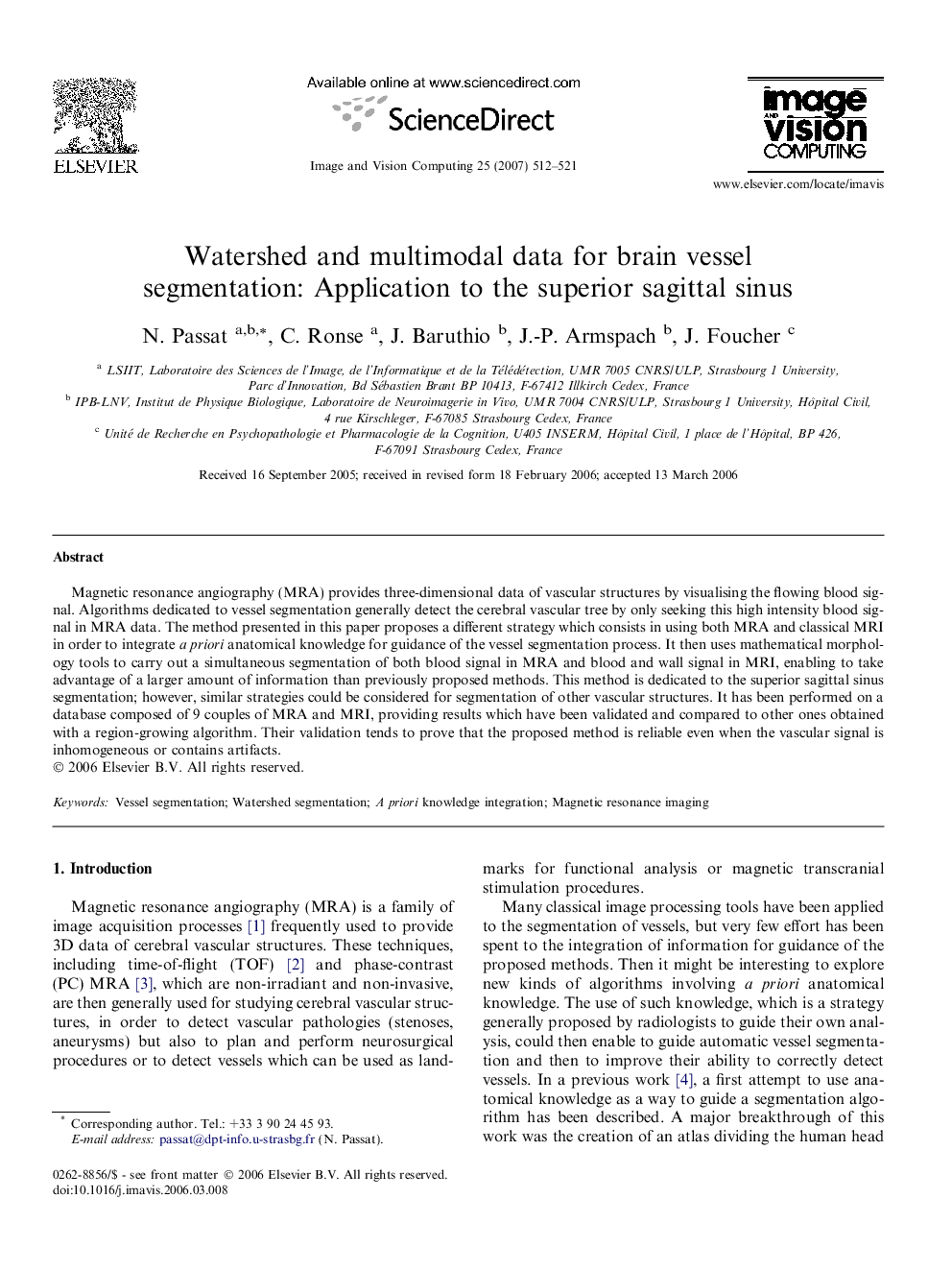| Article ID | Journal | Published Year | Pages | File Type |
|---|---|---|---|---|
| 527667 | Image and Vision Computing | 2007 | 10 Pages |
Magnetic resonance angiography (MRA) provides three-dimensional data of vascular structures by visualising the flowing blood signal. Algorithms dedicated to vessel segmentation generally detect the cerebral vascular tree by only seeking this high intensity blood signal in MRA data. The method presented in this paper proposes a different strategy which consists in using both MRA and classical MRI in order to integrate a priori anatomical knowledge for guidance of the vessel segmentation process. It then uses mathematical morphology tools to carry out a simultaneous segmentation of both blood signal in MRA and blood and wall signal in MRI, enabling to take advantage of a larger amount of information than previously proposed methods. This method is dedicated to the superior sagittal sinus segmentation; however, similar strategies could be considered for segmentation of other vascular structures. It has been performed on a database composed of 9 couples of MRA and MRI, providing results which have been validated and compared to other ones obtained with a region-growing algorithm. Their validation tends to prove that the proposed method is reliable even when the vascular signal is inhomogeneous or contains artifacts.
